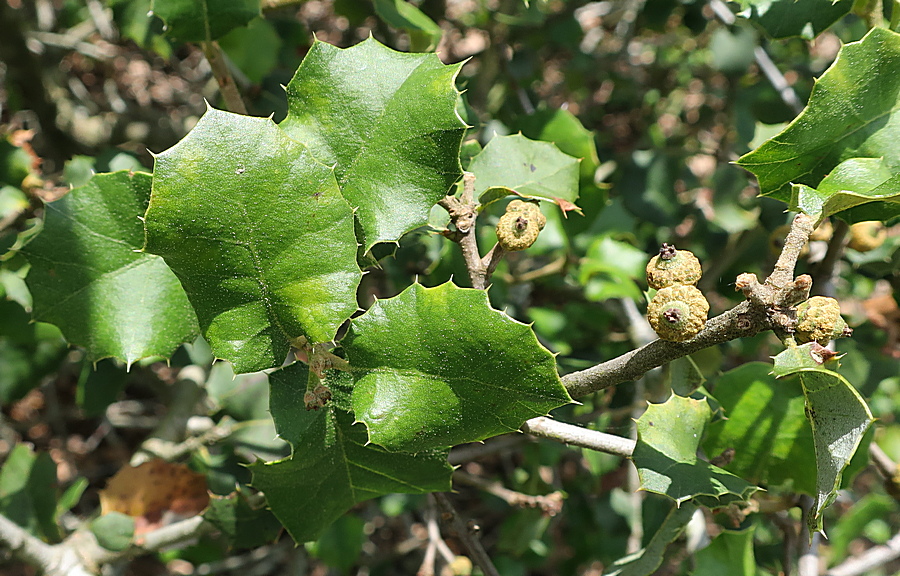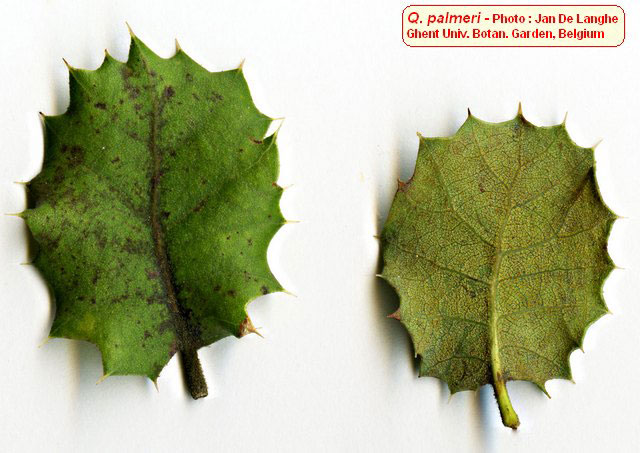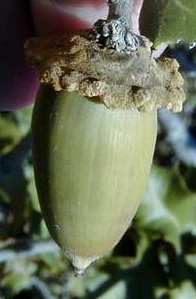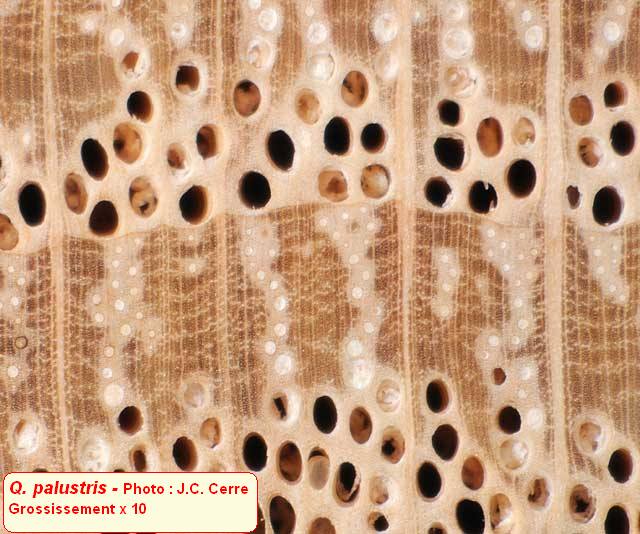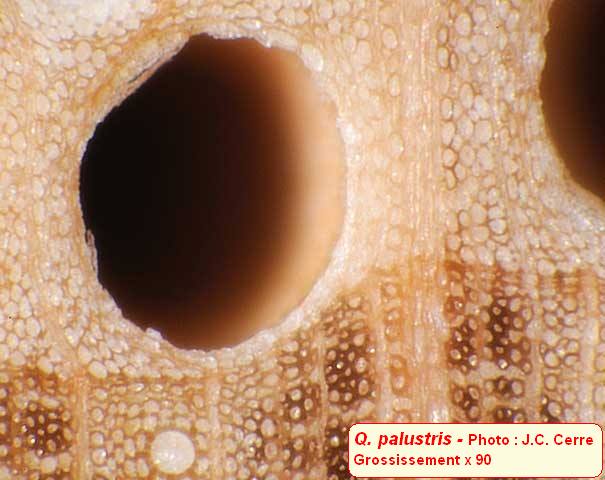| Quercus palmeri | |
| Author | Engelm. 1878 Trans. Acad. Sci. St. Louis 3: 393 |
| Synonyms | chrysolepis var. palmeri (Engelm.)Engelm.
in Watson 1880 dunnii Kellogg ex Curran 1879 |
| Local names | Dunn oak ; Palmer's oak ; |
| Range | United
States (Arizona, California, Nevada, New Mexico, Utah); Mexico (Baja California);
1000-2400 m; |
| Growth habit | reaches 5 m tall; often multiple trunks, looking like bush or thicket; stout, stiff branches; |
| Leaves | 2-3
x 2-4 cm; persistent 3 years; elliptic or rounded; leathery; not convex;
apex rounded; base rounded to sub-cordate; margin wavy, sometimes revolute,
with 3-9 sharp teeth each side (among the spiniest of any oak species),
seldom entire; grey green above, with fascicled erect and twisiting hairs;
glaucous, waxy, minutely yellowish brown tomentose beneath; 5-8 vein pairs,
prominent below; petiole 2-5 mm, round in cross section, pubescent or
not; |
| Flowers | male in April-May; 7-9 stamens; |
| Fruits | acorn
2-3 cm long; oblong to spindle-shaped; pointed, mucronate; single or paired;
enclosed 1/4 to 1/3 by cup; cup sessile or nearly so, thin, flared, wider
than nut, scales covered with orangish glandular hairs; maturing in 2
years, from August to October; |
|
Bark, twigs and |
bark
grey brown, scaly; young shoots often covered with orangish glandular
hairs, becoming dark grey, smooth, glabrous, stiff; 1.5-3 mm in diameter;
buds glabrous, rounded at apex, brown, 1-1.5 mm long; |
| Hardiness zone, habitat | not
quite hardy (zone 7-8); prefers dry soils and warm summers; produces thickets
that are impenetrable by large mammals; |
| Miscellaneous | --
A.Camus : n° 294; -- Subgenus Quercus, section Protobalanus; -- Close to Q.chrysolepis; -- Resembles Q.cedrosensis that have less rounded, greener leaves, and conspicuous scales; resembles also Q.chrysolepis whose cup is not wider than nut, and Q.turbinella whose leaves are smaller, with stalked acorns and without the flared cup ; -- No known hybrids; |
| Subspecies and varieties |
|
| Pictures |
More pictures HERE
|
